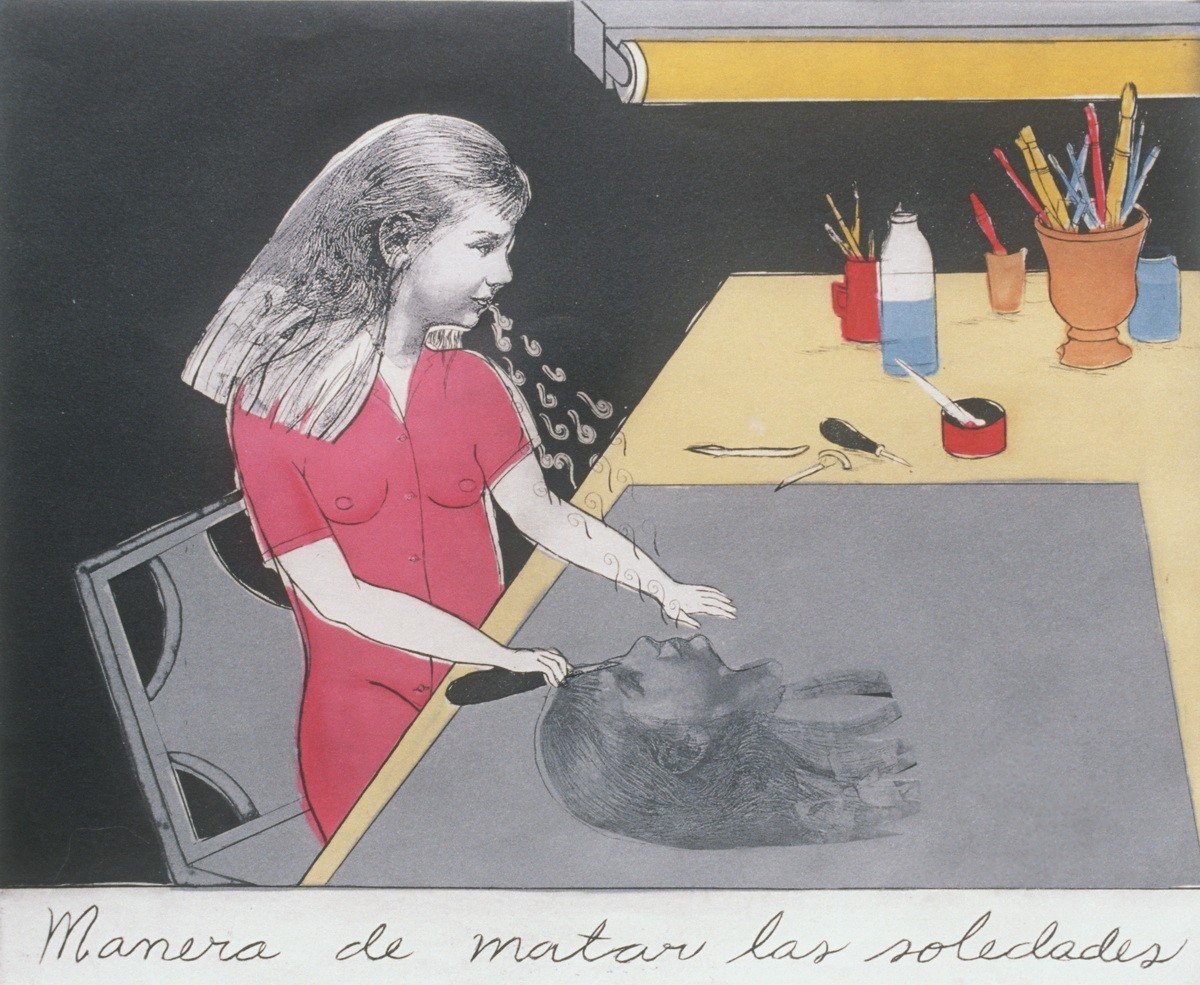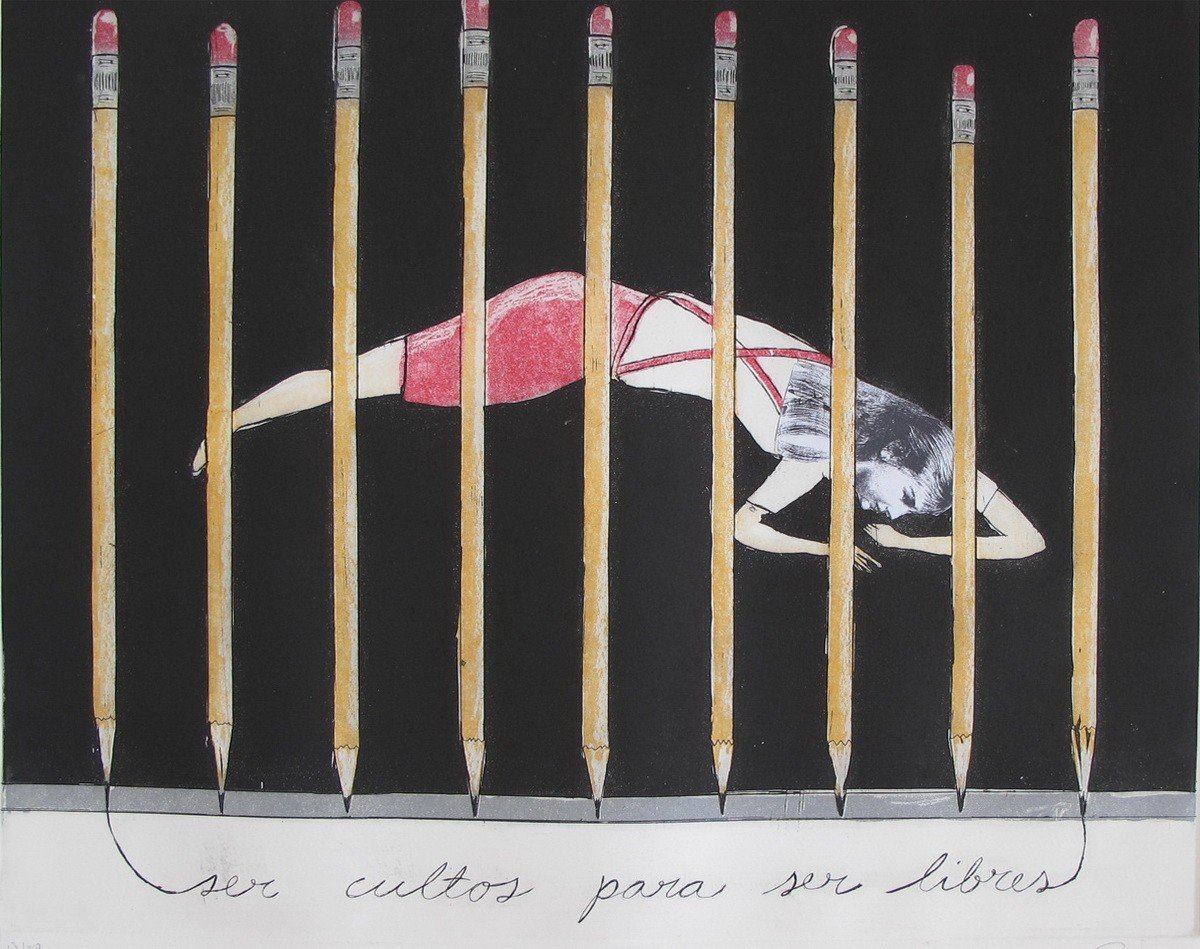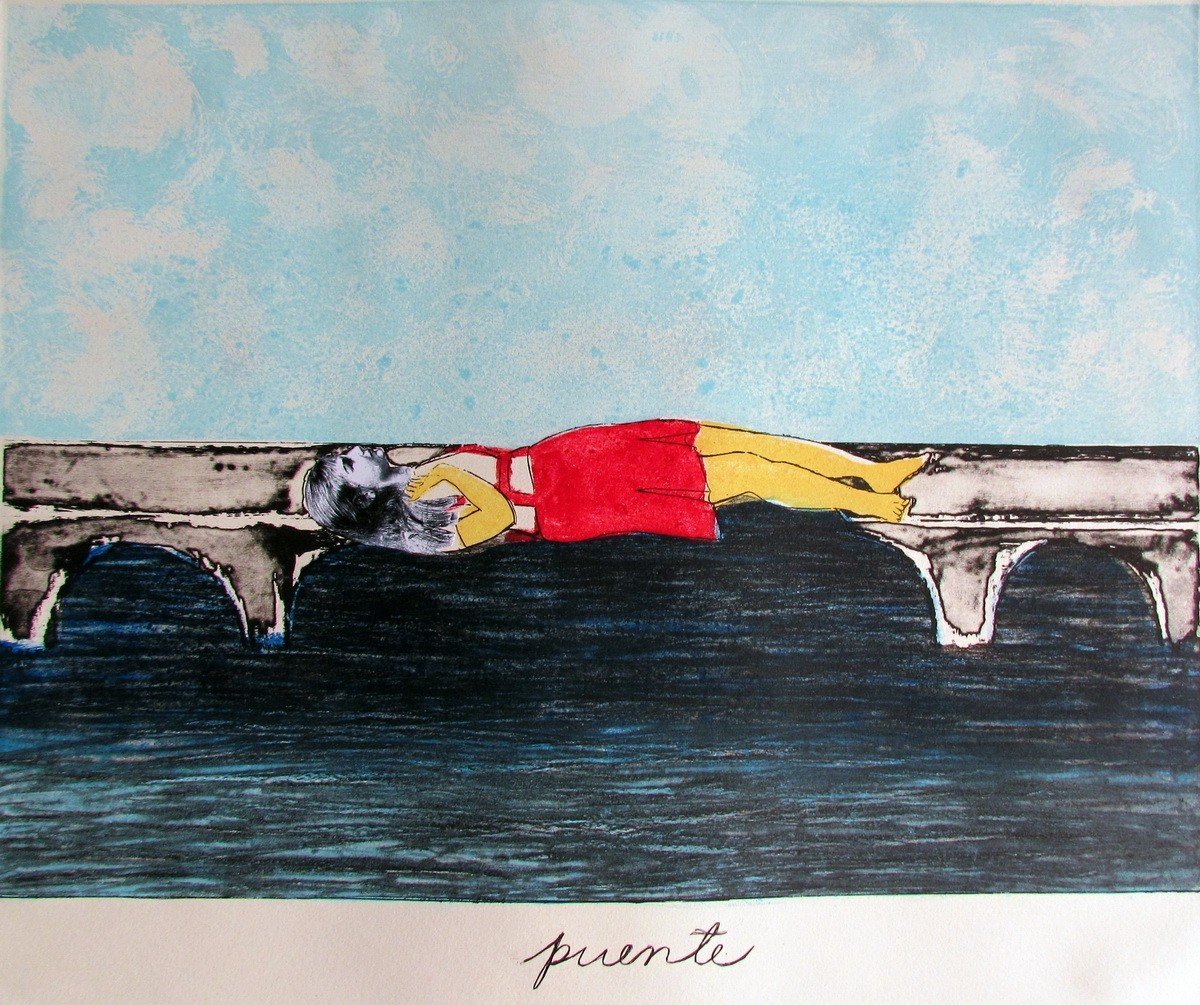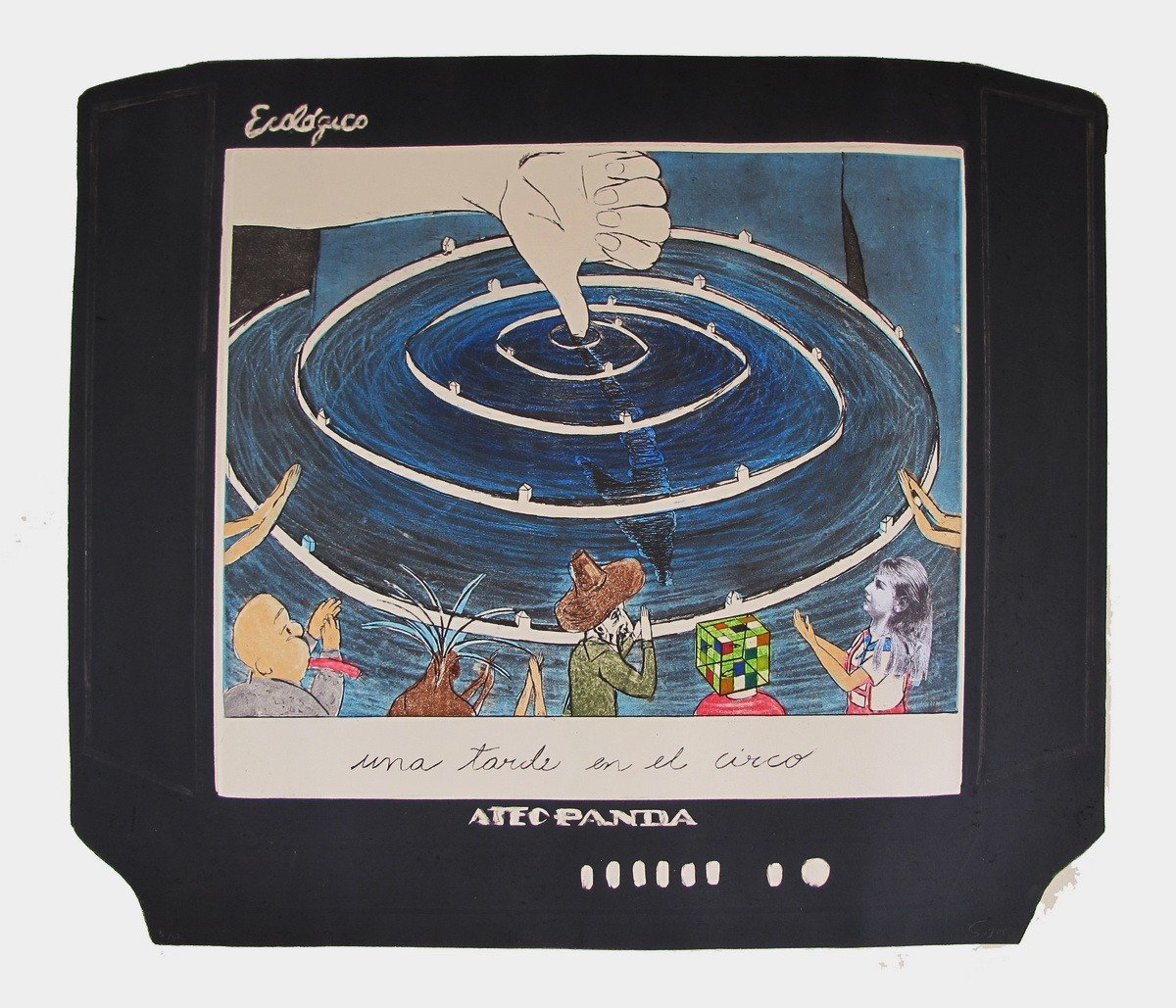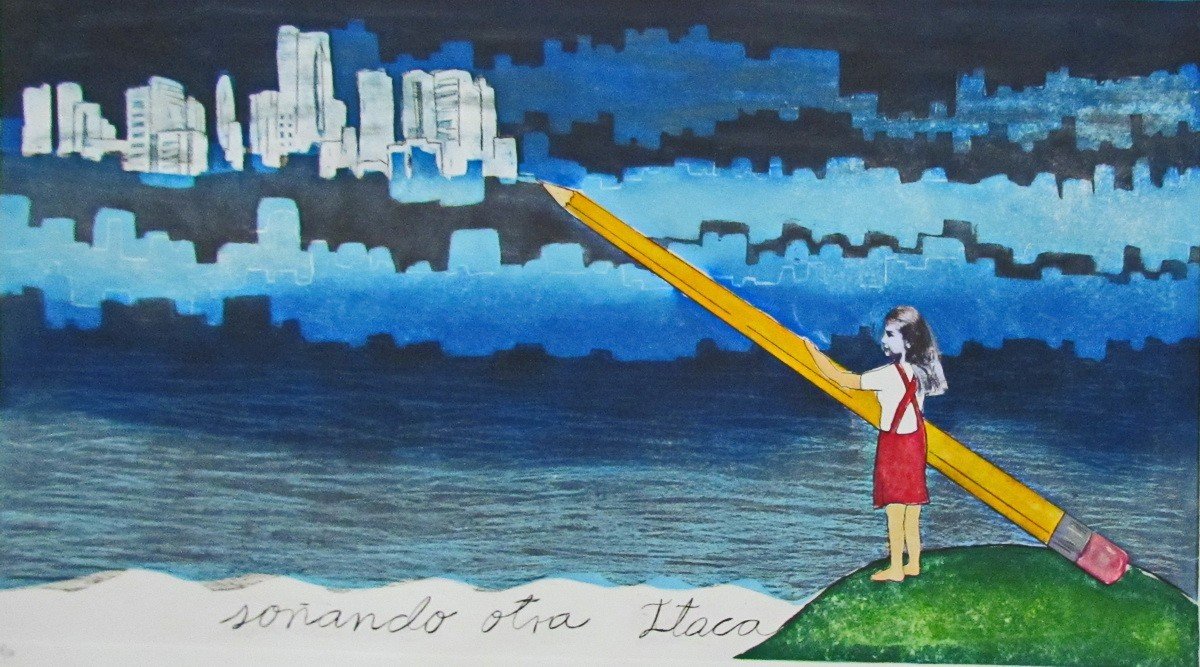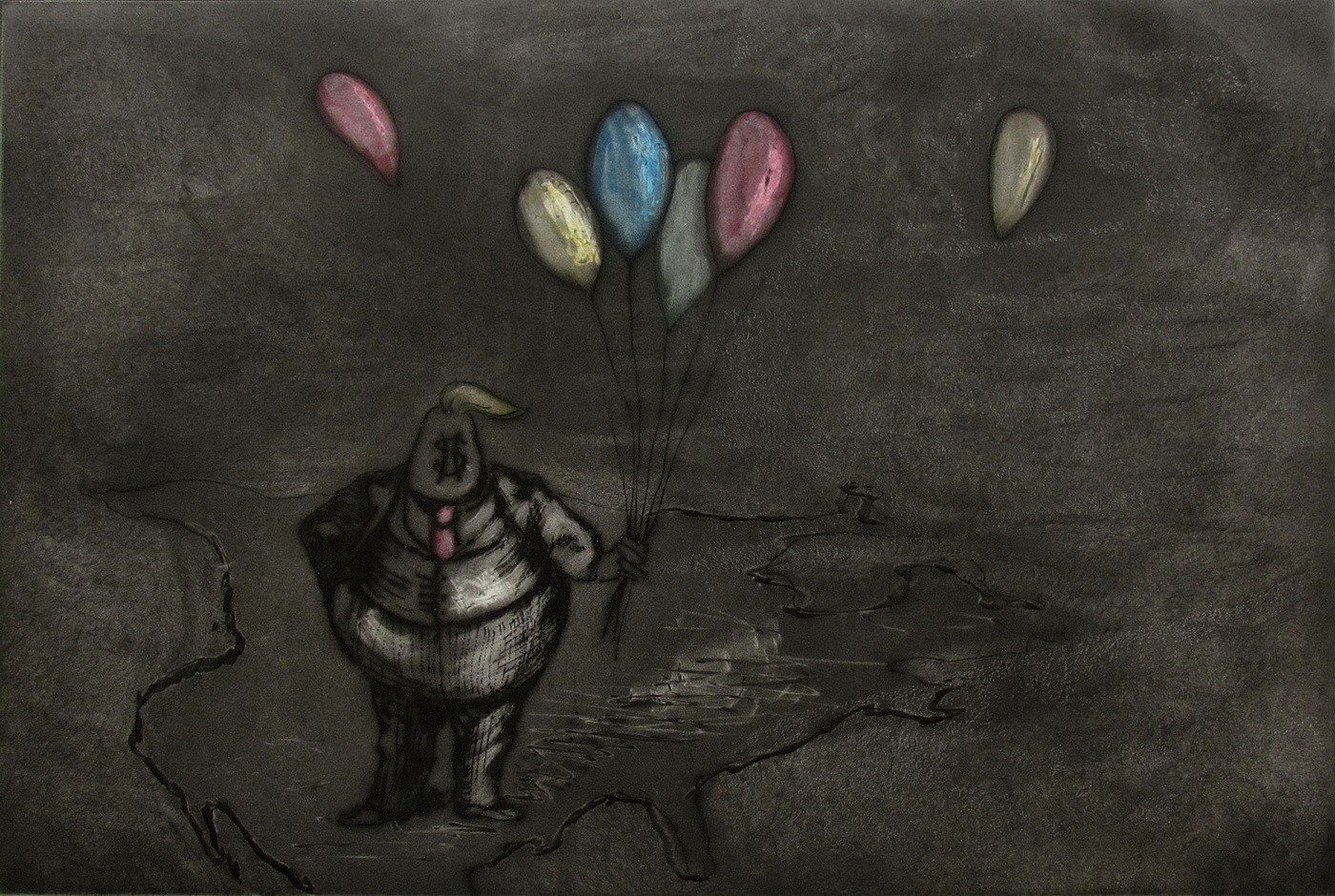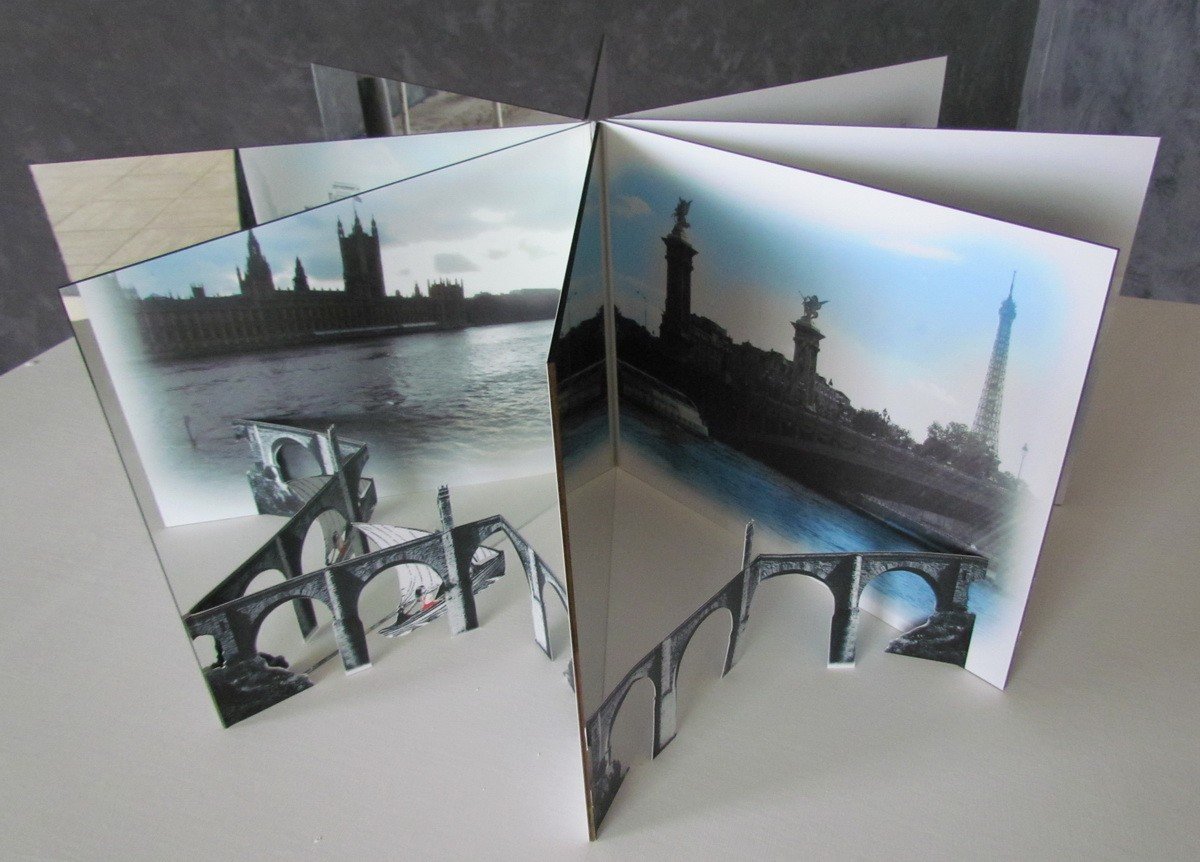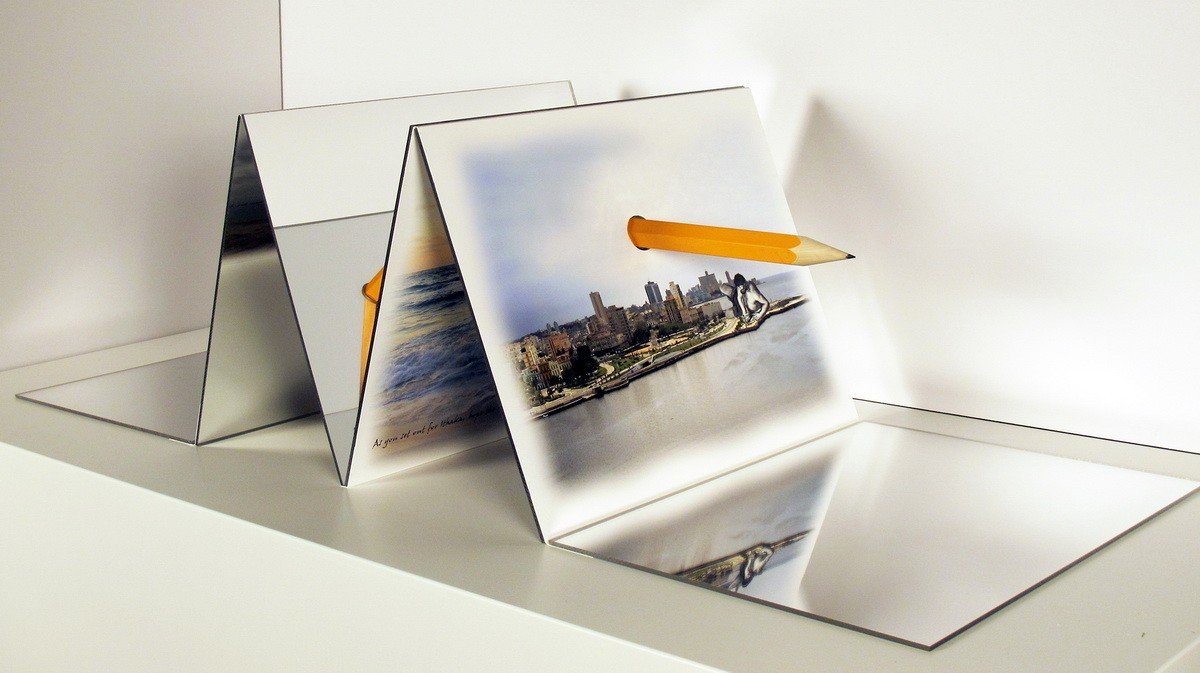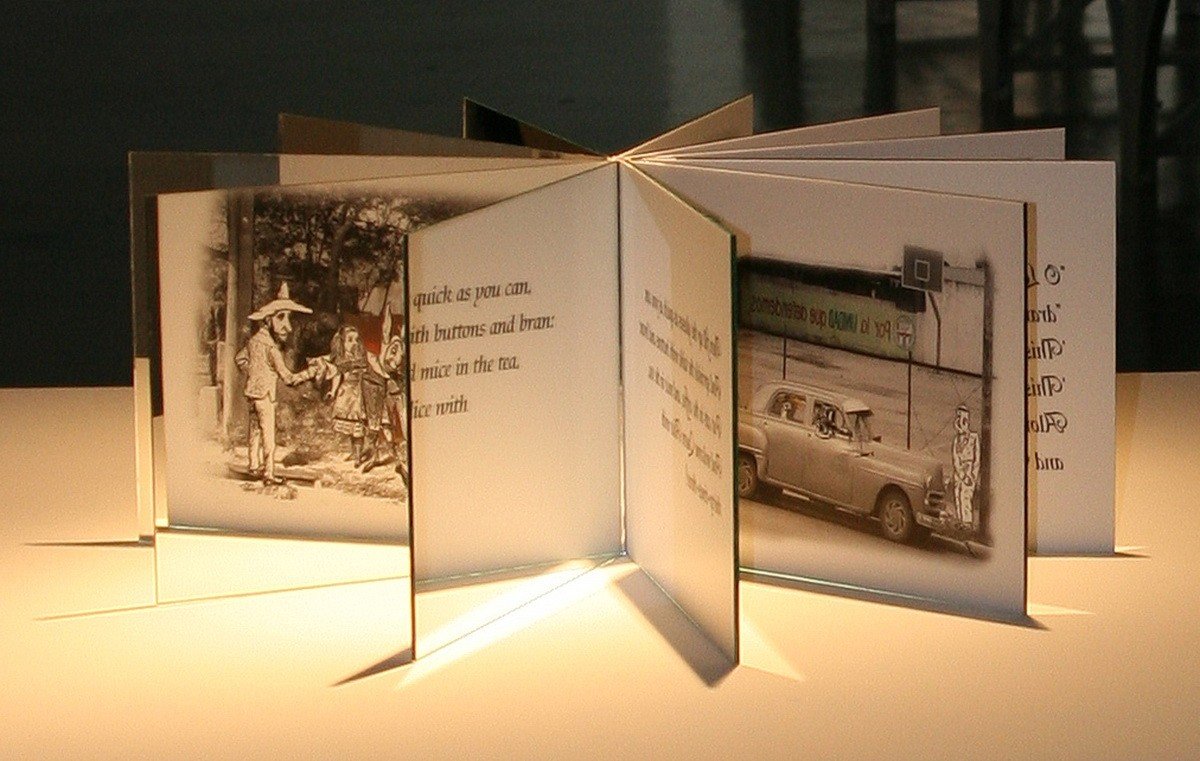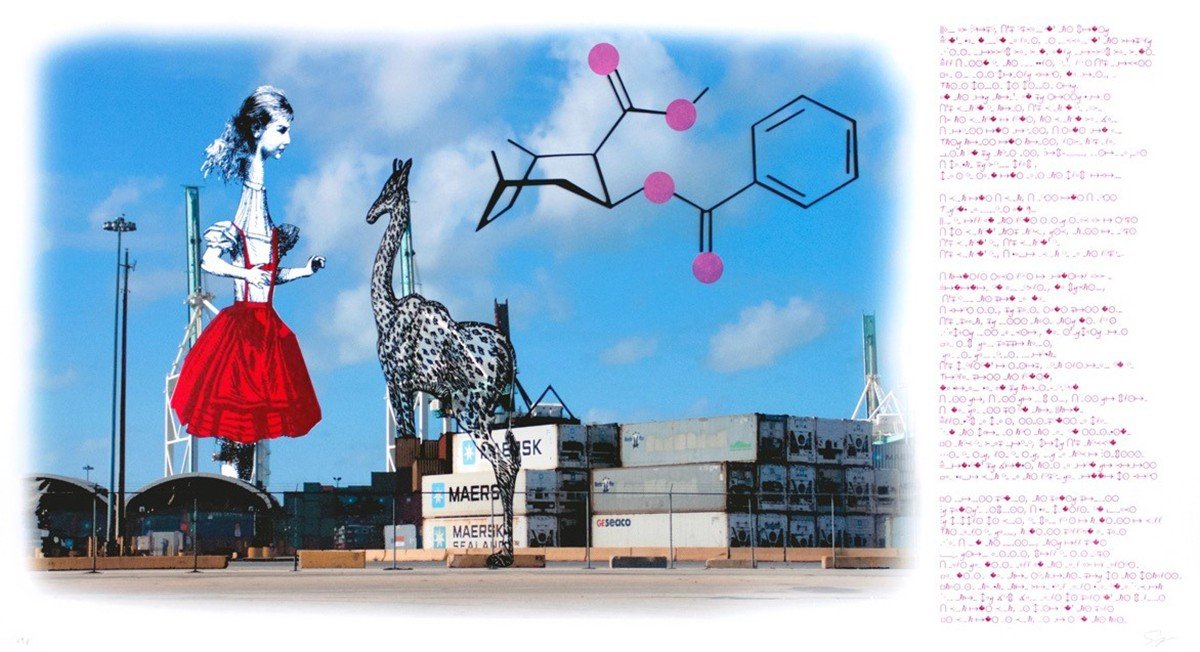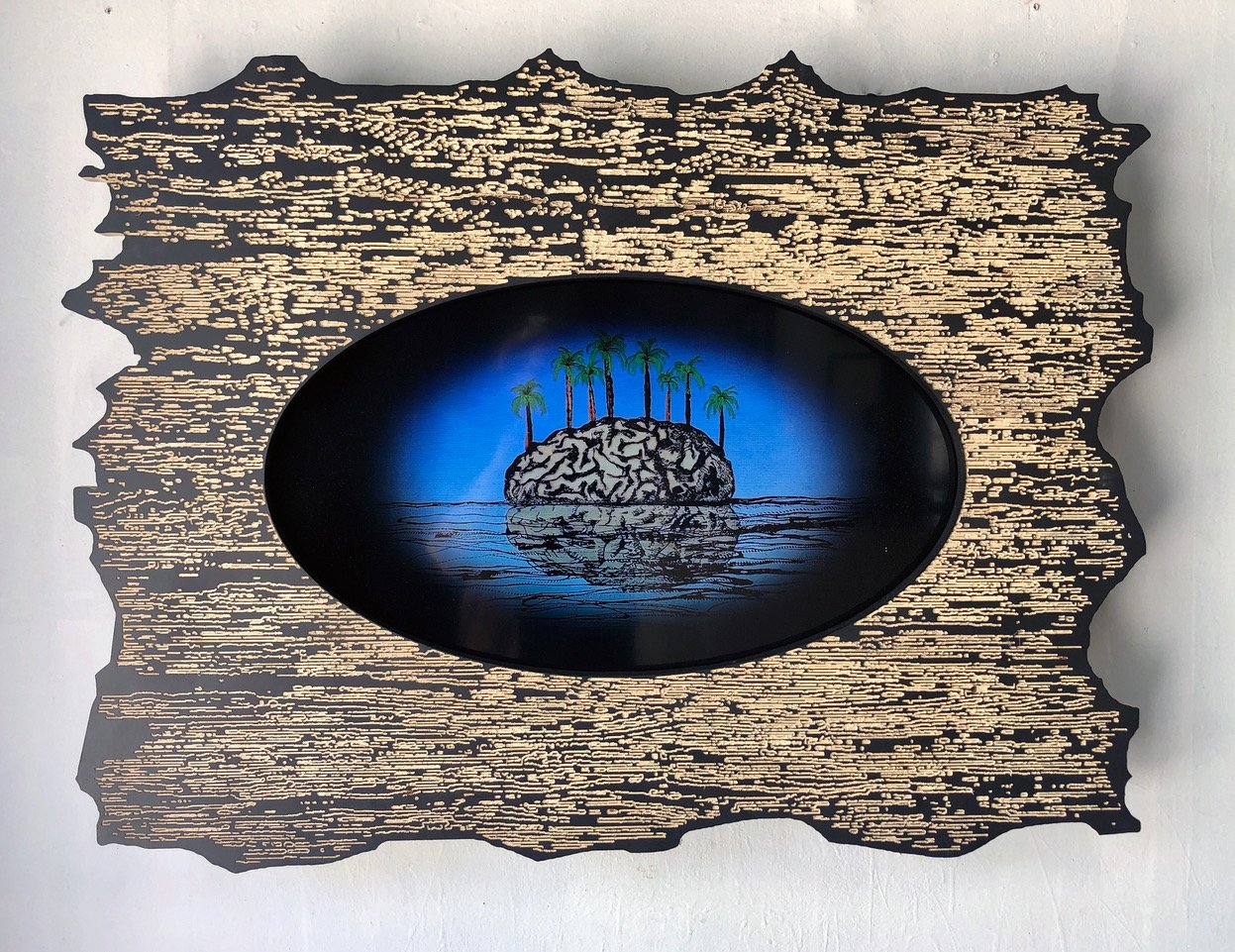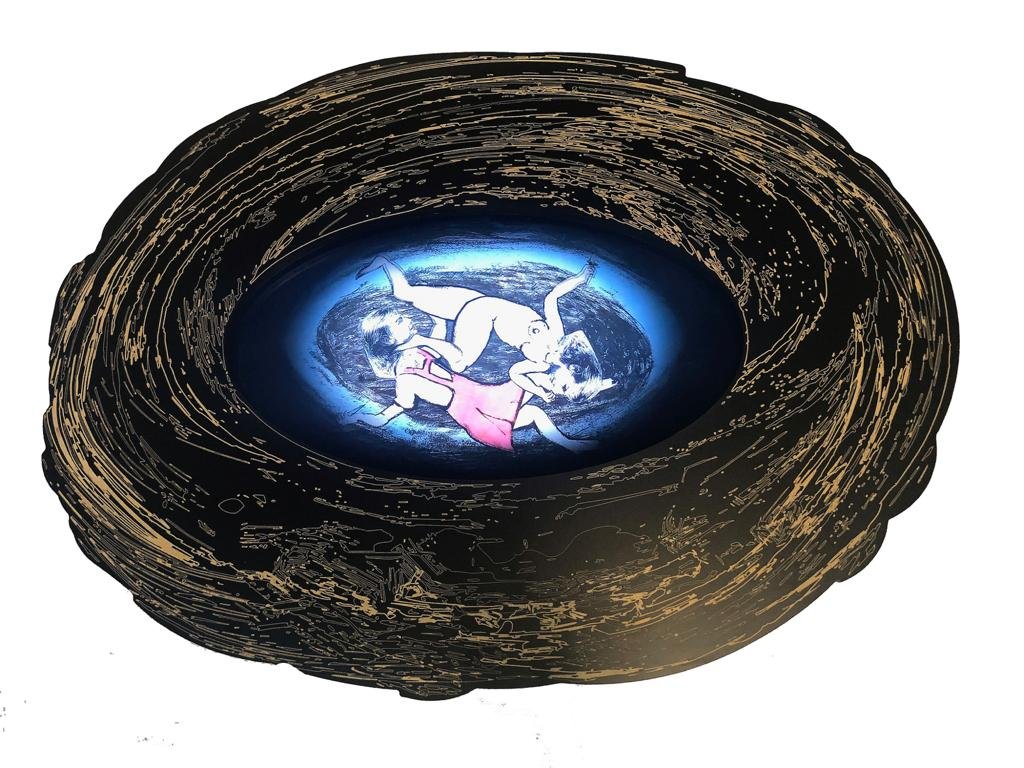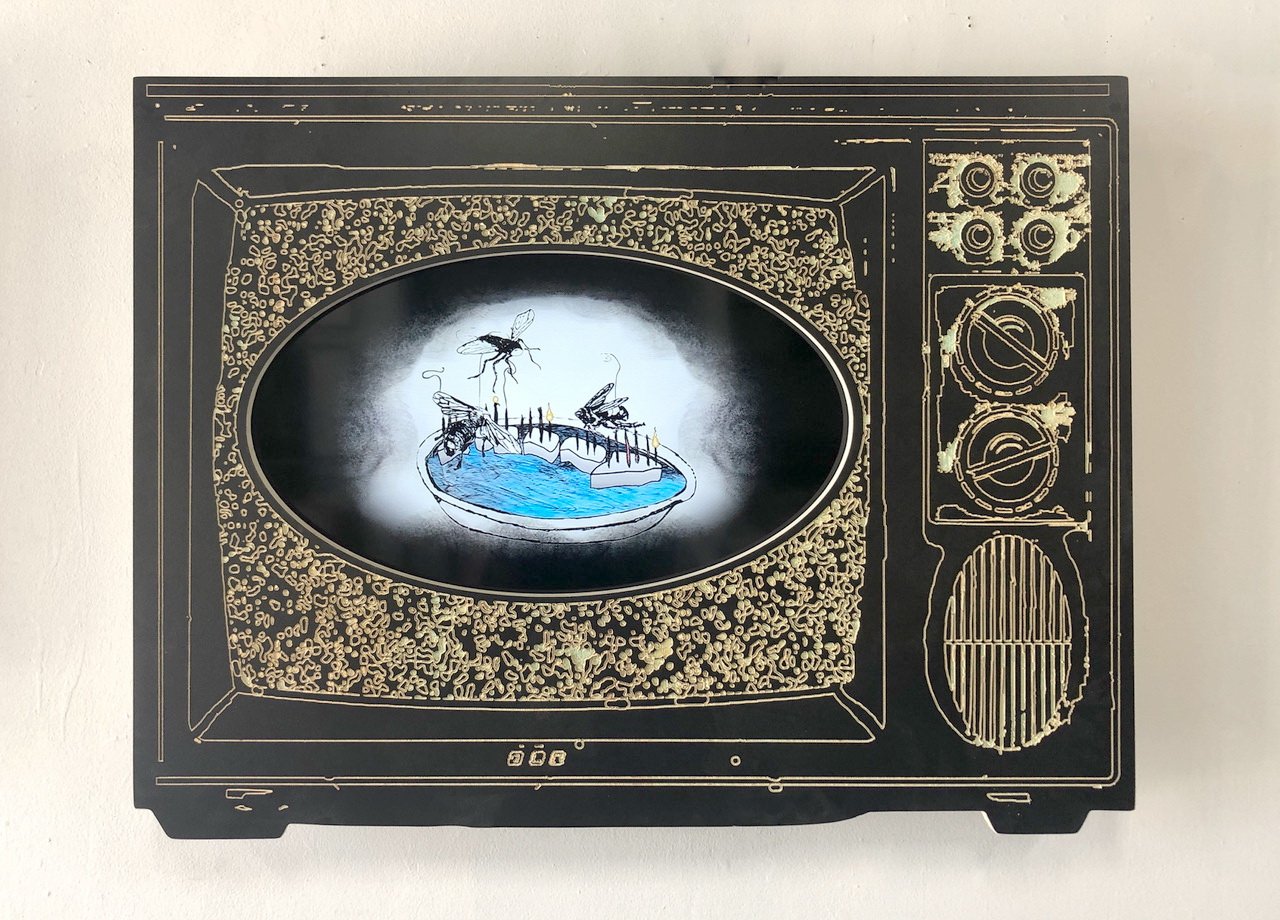Q/A with Cuban Contemporary Artist: Sandra Ramos
Sandra Ramos is an acclaimed Cuban contemporary artist known for her diverse range of artwork including painting, printmaking, collages, videos, interactive installations, and more that explore themes such as identity, nationality, society, and gender. Through our EEAbroad virtual learning initiative, we partnered with Sandra Ramos and her sister, Liane Ramos, to produce a virtual home studio tour of Sandra Ramos’s personal studio in Havana.
Every EEAbroad virtual learning module includes a post-viewing Q&A with the video host to facilitate a deeper understanding of the theme and subject matter. We found a recent student Q&A with Sandra Ramos incredibly insightful, so we’re turning it into a blog!
If you’ve never checked out Sandra Ramos’s art, we encourage you to visit her website and if you’re in Miami, go see her work in person! For now, we hope you enjoy learning about Sandra’s life, art, and inspiration over the years. We love her personal insight and the length at which she answers our students’ questions.
1. Do you sell your art? If so, who do you see buying your work most often?
Yes, mostly to American and Cuban-American collectors. The United States has been the leading market for years. I’ve been working with commercial galleries since 1993 including Nina Menocal, Mexico City; Promo-arte Gallery, Tokyo; Accola Griefen Gallery, New York City; and Pan American Art Projects, Miami. I also sell my work in her Havana and Miami Studios.
2. Are there any regulations around art in Cuba? Some of the art seems to appropriate characters, such as political figures.
Concerning the characters, I use as references in my work such as Liborio, El Bobo, Boss Tweet, and Alice in Wonderland, all of them are in the Public Domain because they are more than 100 years old. Since 1993, I have made a lot of color chalcography engravings using etchings and aquatint techniques. In those prints, I mix my self-portrait and a 19th-century wood print to create a character similar to Alice in Wonderland. This girl, costumed as a Cuban pioneer with a red uniform, a “pionera,” educated in Cuban socialist standards but confronted with a real world that has nothing to do with an idealistic society – a symbol of childhood innocence and utopia, who functions as an alter ego making critical and ironic social comments about the recent history of my country. As a narrative character, she guides the stories’ images pointed out by texts through reflections about Cuban's everyday life and concerns. In this work, I also incorporated classical characters taken from the popular political Cuban caricatures: Liborio and Abela’s Fool, El Bobo which are symbols of the Cuban people during the beginning of the 20th century and the neo-colonial period. On the other hand, the appropriation of characters is a well-known tendency in the artist’s movement throughout art history and around the world. In my works, it allows me to create a link between the past, present, and future.
3. How hard is it to come across art supplies in Cuba, especially ones for niche mediums that require special materials?
For years, Cuban artists have had a lot of problems finding adequate materials to develop their work, and even when an artist in Cuba has access to a few particular state-owned shops, art materials are usually very expensive. On the other hand, Centro Nacional de Áreas Protegidas (CNAP) also granted special permits to present to customs in order to import a particular set of supplies with a justified purpose. When those mechanisms insufficiently satisfy artists´ demands, they usually go abroad to buy items themselves and bring them to Cuba in their luggage. Many professional artists that work with galleries outside of Cuba prefer to produce their artwork offshore and then, with an import permit from the Registro Nacional de Patrimonio (RNP ), they bring their artwork to Cuba. It has been very difficult to stay on track with the development of new materials, techniques, and technology on an island with so many shortages in supplies of all kinds. Therefore, the artists have to be more creative, hardworking, and flexible concerning the mediums they use to express themselves.
4. Your art focuses a lot on struggle. Is there any artwork that communicates "freedom?"
The themes of all of my artwork are an expression of the freedom to express my personal concerns about Cuban society, and lately, from a universal point of view. As a contemporary artist, I am interested in showing the social, economic, and political contradictions of our everyday life.
Some examples include:
5. You have a lot of different art forms that you like to express yourself and your views through. What drew you to these particular art forms?
I use diverse media according to the varying significance of each work. I have made many chalcography engravings, paintings, mixed media, and drawings; objects, installations, video installations, and 3D animated shorts. There are no differences in the themes used over the years, just a unique way of being expressed through each technique. They complement each other and allow me to express my concerns fully.
I started making etchings in 1993 focusing on reflections about everyday life and concerns including Series: A way of killing loneliness (1993); Series: History Lessons (1996); Series: ATEC PANDA (2002 – 2008); Series: Secret Fears (2011); Series: The Mythological (2012); Trumpito Series (2017-2018); among others.
In the painted suitcases, Migrations (1989-1991), I tried to make a compilation of the experiences, dreams, deceptions, and illusions of Cuban people that emigrate from their country. Other sculptures and installations deal with the imaginary representation of an aquatic world. In them, I use new materials like glass, mirrors, aquariums, water, live fish, snails, sand, etc. to create a kind of artificial water world defined by the impossibility of changing human destiny – Aquariums (1996); Self-recognition of the fish (1997); among others. In other installations, I used video to describe a marginal world of poverty and evasion such as in Divers (1999) and Electrodaylygrind (2006).
The mirror books including Through the Cuban Looking Glass (2011); Puentes (2012); Searching Ithaca (2015); among others are objects of culture and knowledge that open doors to other worlds, other realities; a stimulus to creativity and imagination.
On the other hand, the short 3D animations allow me to widen the expressive and communicative margins of my pictorial and graphic work with the use of symbols, characters, and situations I have been using all these years. Their re-elaboration in a narrative media with a particular vision and promotional capabilities concedes me the opportunity to take this little history of scenes of daily life in Cuba to a high level where the movement completes the specific idea – Aquarium (2013); Malecón (2013); The Powerball (2017).
Series: Chaos and Entropy, Port of Miami, and I-95 Highway (mix media, print, and acrylic engraving, 2016) focus on the appropriation, learning, and reinterpretation of my new experience living in the context of the United States; this is why cities, architecture, and landscapes have become important references for me. In some cases, the pieces start from the naive and astonished gaze of the Pioneer Girl that tries to snatch a moment of psychological perception and translate it into an image. These prints express the alienation, craziness, and velocity of everyday situations in a modern metropolis, such as a trip on the highway. In some images, I look to humanize or reinterpret reality by the zoomorphism of some architectural elements, such as the Port of Miami cranes that mutate into giraffes and include references to popular songs that have been imprinted in my memory. With those objectives, I use personal videos and photography I have taken on my trips, mixed with images and other symbolic elements, such as bridges, passports, identity cards, monuments, and landmarks.
In the Trumpito Series (drypoint engraving, 2017), I use a contemporary reinterpretation of the character, Boss Tweed, created in the late 1860s by political cartoonist Thomas Nast. My work is based on references to history, and how historical and political events have been visually represented, especially in the most popular and less elitist artistic media such as prints, cartoons, illustrations, etc. That is why I draw a parallel between the corrupt Boss Tweed caricature and the situation we were immersed in with Donald Trump's controversial way of leading American politics.
The pieces in the Series: Ashes & Diamonds (charcoal, wood, and methacrylate engraving, 2018) are part of a large multimedia installation project. In them, I visually and poetically contrast natural elements such as wood, coal, and natural pigments as opposed to manufactured materials and techniques, such as engraving on methacrylate, photography, and video animation. This allows me to address issues related to the ecological and socio-political crisis in our world today. It also expresses the dystopian feeling of being on the verge of history.
In the Series: Visual Haikus (video animation & woodcut, 2019-20), a traditional Japanese haiku is a three-line poem with seventeen syllables, focusing on images of nature. Haiku emphasizes simplicity, intensity, and openness of expression. In this installation series, I use these poetic resources translated into a short animation surrounded by a vignette-like woodcut frame to highlight briefly, but consistently, contemporary life issues related to uncertainty, migration, and sociopolitical and economic manipulation of populations in our globalized world.
The series of drawings in Quarantined Drawings: The invisible karma (watercolor, collage, and pastel on paper, 2020-2021) has functioned as cathartic self-therapy in the face of the isolation imposed by the COVID-19 pandemic.
Impossible Dialogue (installation, clay, plastic, furniture, and video, 2022) is a participative art installation that focuses on the symptomatic polarized lack of civility that is affecting our interrelations in social media spaces. This installation resembles an Apple store where the technological products are replaced by clay phones, tablets, and laptops with relief inscriptions of texts and images. The pieces represent an ironic palimpsest of cuneiform clay tablet records of the ancient Sumerian disputes and communication on social media networks today of hatred, intolerance, and extremism.
6. What type of art are you currently working on? What is it inspired by?
I am currently working on several immersive installation projects incorporating video, printmaking, and objects.
My latest artwork: The Hand of History (immersive video installation, 2022). The soundtrack was composed by Pavel Urkiza. The Hand of History was motivated by the memories of my childhood as a 20th-century student, the changes in learning after the development of the internet, and my interest in art as a way to explore, accumulate and transmit knowledge. This immersive participatory project signals how important it is for local communities to acquire knowledge of their past in relation to the broader world history. The installation focuses on a critical dialogue of the Western version of world history as a set of crucial events and influential personalities that occurred in a rational, linear, consecutive, and consistent progression, ignoring, in many cases, cultural, racial, ecological, and gender factors.
Formally, the piece is a dystopian, timeless classroom where there is chaotically-distributed used furniture and other objects related to education. Five video animations are projected indistinctly over those surfaces. These videos show a historically established procession of Western traditions and portraits of important individuals, constantly drawn and erased by an anonymous hand.
Entropydoscopes is based on the updating of a series of ideas articulated with kaleidoscopic pieces that I made in 2009 in Havana, which have to do with the manipulation, quantity, and variety of digitized information that we, human beings, are capable of assimilating. This project will be exhibited at Lowe Art Museum at the University of Miami in October 2022.
At the same time, I have been working for a year on a participatory installation that will be my next personal exhibition on the theme of polarity and individual responsibility in interactions on social platforms, which will be made up of 500 cell phones made of clay and five videos. These draw a parallel between the ancient cuneiform tablets bearing the Sumerian disputes which are the oldest forms of written confrontation for which we have evidence.



